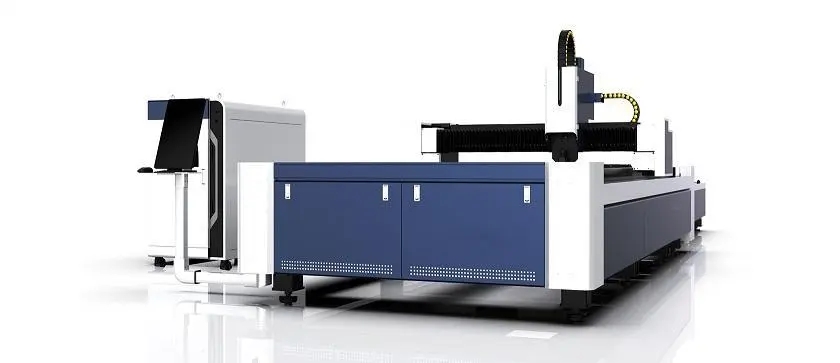CNC Laser vs CO2 Laser: Which Reigns Supreme in Precision Cutting?
Introduction
Precision cutting has become a vital process in various industries, ranging from manufacturing to crafts. As technology continues to advance, laser cutting has emerged as a dominant technique offering exceptional accuracy and efficiency. However, when it comes to laser cutting, two main types stand out: CNC laser and CO2 laser. In this article, we will delve into the intricacies of these cutting-edge technologies, comparing their features, advantages, and limitations. Whether you are a business owner, a craftsman, or simply curious about lasers, this article will help you identify which technology reigns supreme in precision cutting.
I. CNC Laser: Precision and Automation Unleashed
Heading: What is CNC Laser Cutting?
CNC (Computer Numerical Control) laser cutting involves the use of a laser beam controlled by a computer system to precisely cut materials such as metal, plastic, and wood. The computer controls the laser’s movement along the cutting path, ensuring accurate and repeatable cuts.
Heading: Advantages of CNC Laser Cutting
1. Unparalleled Precision: CNC laser cutting offers exceptional precision, allowing for intricate and complex cuts with tight tolerances. The computer-controlled systems ensure accurate cutting, reducing the risk of errors or inconsistencies.
2. Versatility: CNC laser cutting can be used on a wide range of materials, including metals, plastics, fabrics, wood, and more. This versatility makes it a preferred choice for various industries, from automotive to aerospace.
3. Automation and Efficiency: The automated nature of CNC laser cutting significantly reduces human error and increases productivity. Once the design is programmed, the machine can repeatedly produce precise cuts, enhancing efficiency and saving time.
Heading: Limitations of CNC Laser Cutting
1. Material Thickness: While CNC laser cutting is effective on most materials, it may have limitations in cutting thicker materials. For materials beyond a certain thickness, other cutting methods might be more suitable.
2. Initial Investment: CNC laser cutting machines can require a significant initial investment. These machines are complex and require skilled operators to run them effectively. Small businesses or hobbyists may find the cost prohibitive.
II. CO2 Laser: Power and Versatility Combined
Heading: What is CO2 Laser Cutting?
CO2 laser cutting employs a high-powered laser beam generated by a carbon dioxide gas mixture. This laser beam is directed through a series of mirrors before concentrating on a small focal point, allowing precise and accurate cutting.
Heading: Advantages of CO2 Laser Cutting
1. High Power: CO2 lasers are known for their high power output, making them ideal for cutting thicker and denser materials. This technology can effortlessly cut through materials like stainless steel and acrylic, expanding its applications.
2. Speed and Efficiency: CO2 laser cutting is notably faster compared to other cutting methods, making it suitable for large-scale production. The ability to cut through thicker materials without compromising speed ensures enhanced efficiency.
3. Cost-Effective: In terms of operation costs, CO2 lasers are considered more cost-effective than other laser cutting methods. They consume less power and offer a longer lifespan, reducing maintenance and operating expenses.
Heading: Limitations of CO2 Laser Cutting
1. Precision for Thinner Materials: While CO2 lasers excel in cutting thicker materials, achieving intricate cuts on thinner materials can be challenging. The thermal effects of the laser might cause distortion or damage to precise details.
2. Material Limitations: Although CO2 lasers can cut through a wide range of materials, certain materials, such as reflective metals, may pose challenges. The reflective surface can bounce the laser back, reducing effectiveness.
FAQs (Frequently Asked Questions)
Heading: Which laser cutting method is more precise: CNC or CO2?
Both CNC and CO2 laser cutting methods offer impressive precision. However, CNC laser cutting generally provides better precision for intricate and detailed cuts, thanks to the computer-controlled movement of the laser beam.
Heading: Can CNC laser cutting be used on reflective metals?
Yes, CNC laser cutting can be used on reflective metals such as stainless steel. By using a fiber laser instead of a CO2 laser, the reflective surface is less likely to interfere, ensuring effective cutting and precise results.
Heading: What factors should I consider when choosing between CNC and CO2 laser cutting?
When choosing between CNC and CO2 laser cutting, factors such as the desired material thickness, the intricacy of the cuts, production volume, and budget should be taken into account. CNC laser cutting is ideal for precise and intricate designs, while CO2 laser cutting excels in cutting thicker materials and higher production speeds.
Conclusion
Both CNC laser and CO2 laser cutting methods have their own set of advantages and limitations. While CNC laser offers exceptional precision and versatility, CO2 lasers excel in cutting thicker materials at higher speeds. Ultimately, the choice between the two methods depends on specific needs and requirements of the project or industry. By understanding their differences, you are now equipped to make an informed decision on which laser technology will reign supreme in precision cutting for your particular application.





